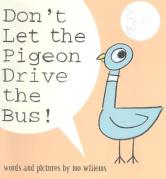READ. TALK. SING. WRITE. PLAY. 5 little words that pack a BIG punch when it comes to early literacy learning. These are the 5 practices that the Every Child Ready to Read curriculum recommends parents engage in with their young children in order to encourage early literacy skills learning. When I present early literacy information to parents, it can be an overwhelming amount of information, especially if you’ve not been exposed to any child development/parenting training. So I ask them to, if they remember nothing else of what I say in the presentation, remember those 5 words. That’s not at all too hard.
One of the things I hope to do with this blog is share fun, easy activities for reading, talking, singing, writing, and playing with a young pre-reader. Why do we engage in each of these activities? Here are the simple answers, and I hope to write more about each of these things in the future:
- READ: Reading aloud to/with a child is THE SINGLE MOST IMPORTANT THING YOU CAN DO WITH A
 CHILD TO HELP THEM BECOME A READER. Children learn how we use language and new words. They learn story structure and become able to predict what will happen next. They grow their comprehension skills. They learn the functions of print and how to use books. In a group read-aloud setting they learn important social skills like self-regulation (sitting still, keeping hands to oneself) and grow their attention spans. Quite simply, they learn to LOVE books and reading.
CHILD TO HELP THEM BECOME A READER. Children learn how we use language and new words. They learn story structure and become able to predict what will happen next. They grow their comprehension skills. They learn the functions of print and how to use books. In a group read-aloud setting they learn important social skills like self-regulation (sitting still, keeping hands to oneself) and grow their attention spans. Quite simply, they learn to LOVE books and reading. - TALK: Talking to children helps them learn words, and how language works. They also learn storytelling – that stories have beginning, middles, and ends. They are better able to comprehend what they read when they begin reading on their own, and better able to recognize the words they are reading if they’ve heard them before. A study by Hart and Risley found a huge disparity in the number of words in the vocabulary of a child coming from a low income home vs. a child living in a “professional” home, and that this was related to the number of words the child heard in the home. Talking to a child is IMPORTANT.
- SING: Not only is singing (loud!) a whole lot of fun, but it also benefit’s a child’s pre-reading skills: they learn to hear the smaller parts in a word as often each syllable in a word is a separate note. This helps with sounding out words later on! They also learn rhymes and vocabulary.
- WRITE: Writing starts with scribbling. And making shapes. By practicing writing, children begin to learn the many functions of print: signs, lists, words on a page of a book, etc. Having pens, pencils, crayons, and other writing tools around encourages children to practice, and helps build their fine motor skills.
- PLAY: Play helps a child learn to read? YES! It does. Playing grows the imagination, which builds comprehension. By playing with a child and talking to them while doing so, a child builds vocabulary, language, and even storytelling skills.
More on each of these (and fun activities to go along with them) in the weeks to come!